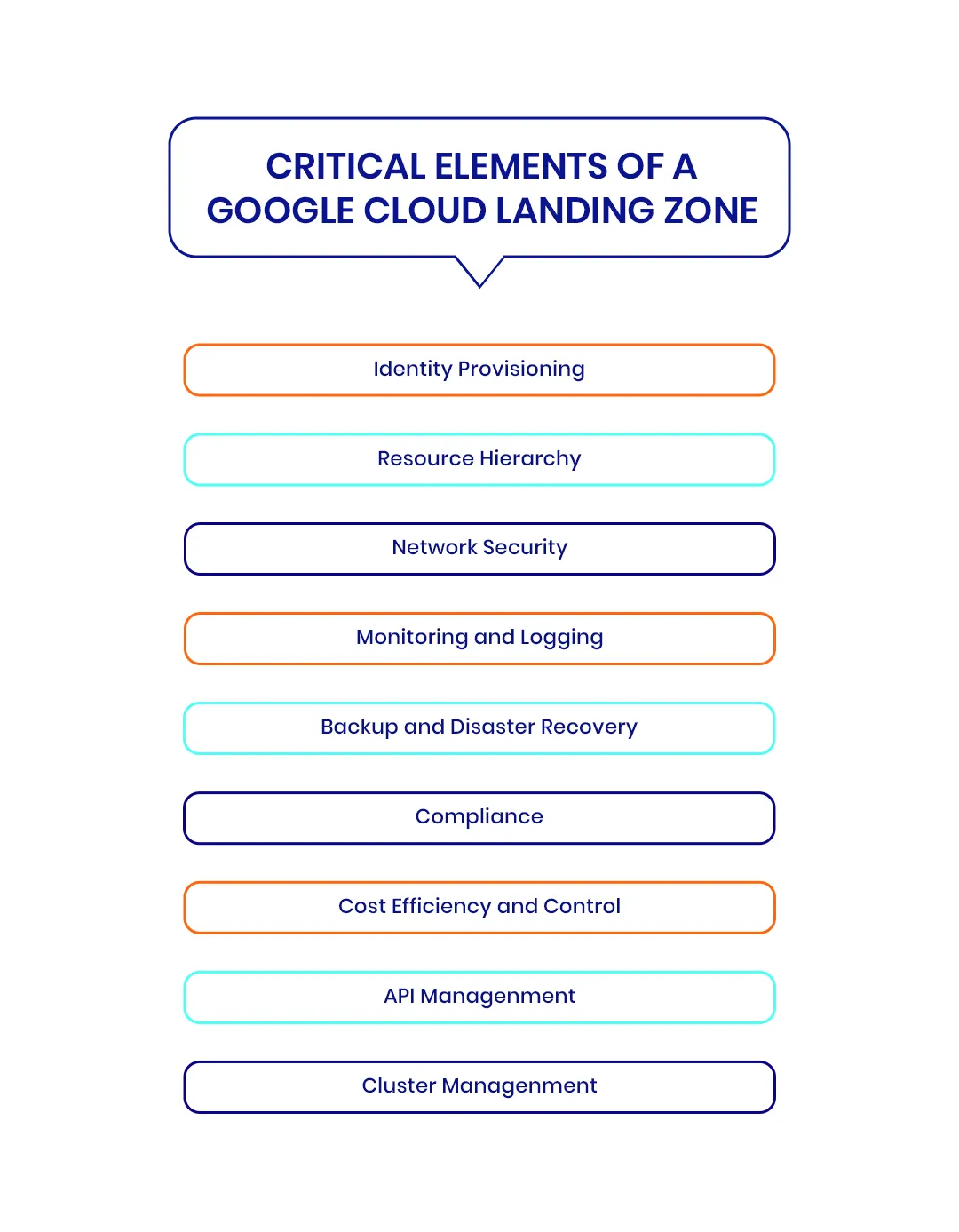As businesses continue to embrace cloud computing, it’s critical to standardize designing and deploying cloud infrastructure. Google Cloud’s landing zone is a reliable blueprint for deploying secure and scalable cloud instances.
Misconfiguration of cloud computing paves the way for vulnerabilities and cloud security. As a result, while venturing into the cloud, it’s quintessential to chart a strategic and security-focused plan.
Exploring the Google Cloud Landing Zone
Landing zones emphasize specificity regarding a pre-defined, well-architected, and secure foundation for your cloud deployments. The Google Cloud landing zone, also popularly known as Cloud Foundations, introduces a repository of best practices and guidelines for creating a secure and compliant Google Cloud environment. The Google Cloud landing zone features best practices for Identity and Access Management (IAM), network security, and data protection.
When To Build A Landing Zone?
A landing zone is essential before deploying your first enterprise workload on Google Cloud. This provides a secure foundation for creating the network and tools to govern cost distribution. While designing the landing zone, consider scalability and growth, as the first iteration might not be the final version.
Elements Of A Landing Zone
This section throws light on the various vital elements of a landing zone:
Identity Provisioning
Identity provisioning helps manage user identities for secure access and authorization to resources. The provisioning should include mechanisms to manage and secure credentials, such as Google Cloud Identity and Access Management (IAM) and Active Directory.
Resource Hierarchy
While designing the resource hierarchy, you can establish an organization’s structure and the underlying relationship between various resources. The hierarchy must ensure that resources are easily accessible, such as organizing projects, folders, and billing accounts.
Network Security
A sound network architecture connects resources securely and efficiently. The network should be scalable, secure, and fault-tolerant. The network design should include Virtual Private Clouds (VPCs), firewalls, and routing. The security design must also incorporate best practices, such as the Principle of Least Privilege and Zero Trust.
Monitoring and Logging
A monitoring and logging strategy can track the performance and health of resources. The strategy must include dashboards, alerts, and logging to visualize data and notify you of any actionable exceptions.
Backup and Disaster Recovery
A strategy for backup and disaster recovery can help protect against data loss or service disruption. The strategy should include backup and restoration procedures and disaster recovery planning.
For expert guidance and support, consider our Disaster Recovery Services to ensure your business stays resilient in any situation.
Compliance
A compliance strategy involves designing frameworks that adhere to organization-wide compliance frameworks. The strategy should include identifying and addressing compliance requirements like HIPAA, PCI DSS, and GDPR.
Cost Efficiency and Control
This includes designing capabilities to monitor and optimize the workload cost in the landing zone. The design must incorporate cost optimization best practices, such as using cost-effective resources, setting up budget alerts, and leveraging managed services.
API Management
It’s critical to design a scalable solution for APIs that includes API management tools, such as Apigee API Management, to ensure that APIs are secured, monitored, and optimized.
Cluster Management
Cluster management is designing GKE clusters that follow best practices to build scalable, resilient, and observable services. The design should include configuring Kubernetes, auto-scaling, and observability tools to manage the clusters efficiently.
For expert support in optimizing your cluster management, explore D3V’s GKE Managed Services to ensure your clusters run smoothly and reliably.

Google Cloud Landing Zone Best Practices
Here are some best practices for designing and deploy a landing zone on Google Cloud:
Define your organization’s policies
Before creating your landing zone, define your organization’s policies and requirements. These policies will help you enforce consistent security and compliance across your cloud infrastructure.
Plan your resource hierarchy
Define a logical grouping of resources based on your business needs. This will help you manage resources at scale and ensure consistency across the organization.
Design a well-architected network
Plan your network architecture based on your business requirements. Define VPCs, subnets, and firewalls to ensure secure and reliable connectivity for your cloud resources. Do check out the Google Cloud Architecture Framework for cloud networking best practices.
Implement IAM policies
Define IAM policies that grant the minimum permissions required for users and services to perform their tasks. This ensures that only authorized personnel can access resources.
Set up logging and monitoring
Configure logs, metrics, and alerts to provide visibility into your cloud resources. This will help you detect and respond to security incidents and ensure compliance with regulatory requirements.
Automation via Terraform Modules
Automating the landing zone setup process can reduce the time and effort required to create a reliable and secure foundation for your cloud deployments. Terraform is an excellent tool for automating the setup of landing zones in Google Cloud. Terraform is an open-source tool that provides a declarative language for defining infrastructure as code. It allows you to define your infrastructure in code, version control it, and automate its deployment and management.
Terraform provides several modules for automating the creation of a landing zone in Google Cloud. These modules offer pre-defined templates for creating resource hierarchies, VPCs, subnets, IAM policies, and logging and monitoring. These modules can reduce the time and effort required to set up a landing zone and ensure that your infrastructure meets Google Cloud’s best practices and guidelines.
Wrapping Up
The Google Cloud landing zone is essential for secure, scalable, and efficient cloud infrastructure. By implementing best practices and leveraging automation tools like Terraform, businesses can enhance cloud security and optimize resource management.
If your team is looking to migrate workloads to Google Cloud or kickstart a greenfield deployment, get in touch with D3V for a free, tailored consultation in landing zone design.
